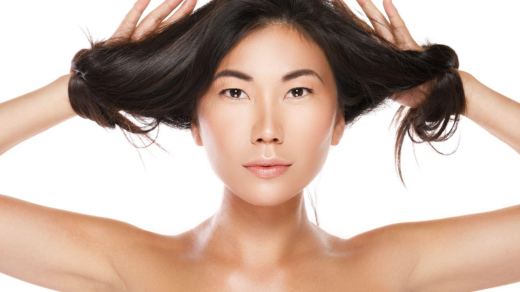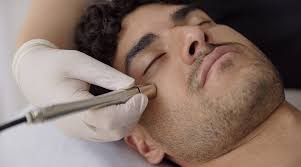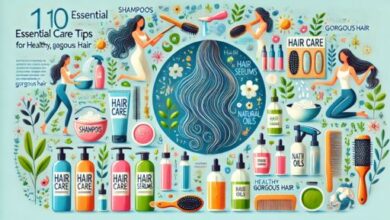Scalp Health: The Foundation of Beautiful Hair

The pursuit of beautiful hair often focuses on strands while overlooking their literal foundation the scalp. This living, complex tissue serves as both the anchor and incubator for every strand, yet receives disproportionately little attention in typical hair care discussions. Dermatologists and trichologists increasingly recognize that many common hair concerns from lackluster appearance to premature thinning originate not in the hair itself but in compromised scalp health. Understanding this specialized skin environment and its unique needs represents a fundamental shift in how we approach hair care, moving from treating symptoms to addressing root causes.
The Scalp Ecosystem: More Than Skin Deep
While the scalp is technically skin, it differs significantly from facial or body skin in several important ways. “The scalp has a unique biological profile,” explains dermatologist Dr. Maria Chen. “It contains approximately 100,000 hair follicles, has nearly five times more sebaceous glands than facial skin, and maintains its own specialized microbiome.”
This distinctive environment includes several interconnected components:
Scalp Microbiome: Like the gut, the scalp hosts billions of microorganisms including bacteria, fungi, and mites. In a balanced state, these organisms protect against pathogens and help maintain proper pH. When imbalanced, they contribute to conditions like dandruff, seborrheic dermatitis, and folliculitis.
Sebaceous Glands: These oil-producing structures maintain moisture balance and create the acid mantle that protects against pathogens. Their higher concentration and activity on the scalp produces significantly more sebum than other skin regions.
Blood Circulation: The scalp’s vascular network delivers oxygen and nutrients to follicles while removing waste products. Diminished circulation correlates strongly with reduced hair density and growth rate.
Follicular Units: Beyond just growing hair, these complex structures contain sebaceous glands, arrector pili muscles (responsible for “goosebumps”), and stem cell reservoirs critical for hair regeneration.
This complex ecosystem remains in constant communication with wider body systems. “The scalp serves as an early warning system for internal imbalances,” notes trichologist Susan Walker. “Hormonal shifts, nutritional deficiencies, inflammatory conditions, and stress all manifest in observable scalp changes, often before other symptoms appear.”
Common Scalp Conditions and Their Impact
Various scalp conditions directly impact hair growth and appearance:
Seborrheic Dermatitis: This inflammatory condition affects approximately 5% of the population, characterized by redness, itching, and yellow-tinged flaking. Beyond discomfort, the inflammation can disrupt the normal growth cycle, leading to increased shedding and slower growth. Research indicates the condition involves both an overreaction to normal scalp fungi (Malassezia species) and barrier dysfunction.
Scalp Psoriasis: Affecting the scalp in about 50% of psoriasis cases, this autoimmune condition creates thickened, silvery-scaled patches. The rapid cell turnover interferes with normal follicle function and can contribute to temporary hair thinning in affected areas.
Folliculitis: This bacterial infection of follicles creates small, pimple-like inflammations that can progress to more serious infections if untreated. Chronic folliculitis can ultimately destroy follicles, leading to permanent hair loss in affected areas.
Tension-Based Issues: Tight hairstyles, extensions, and even subconscious scalp tension create a condition called traction alopecia, where physical stress on follicles leads to gradual thinning, particularly along the hairline.
Environmental Buildup: Product residue, hard water minerals, and environmental pollutants create films that block follicles, disrupt the microbiome, and prevent products from properly penetrating.
Microcirculation Impairment: Reduced blood flow to follicles often from stress, smoking, or certain medical conditions diminishes the nutrient supply to growing hairs, resulting in thinner, weaker strands over time.
Dr. James Wilson, dermatologic surgeon specializing in hair restoration, emphasizes the cumulative impact: “Many patients seeking treatment for hair loss have multiple overlapping scalp issues that went unaddressed for years. By the time they notice significant thinning, these conditions have often progressed substantially.”
The Scalp-Hair Connection: How Scalp Health Manifests in Hair Appearance
The condition of the scalp directly influences observable hair characteristics in several ways:
Sebum Production: Properly balanced oil production creates natural shine and protection. Excessive sebum makes hair appear greasy and can flatten the root area, while insufficient production leaves hair vulnerable to environmental damage and breakage.
Cellular Turnover: Optimal scalp cell turnover removes dead cells without disrupting the follicle environment. When dysregulated whether too slow (causing buildup) or too rapid (as in psoriasis) it disrupts the growth cycle and can lead to increased shedding.
Microbiome Balance: A healthy microbiome protects against pathogens while maintaining proper scalp pH (ideally 4.5-5.5). Disruptions contribute to inflammation that compromises follicle function and alters the hair’s cuticle structure.
Inflammatory Status: Chronic scalp inflammation, even at subclinical levels, shortens the growth (anagen) phase of the hair cycle while extending the resting (telogen) phase, ultimately reducing both density and maximum possible length.
Barrier Function: An intact scalp barrier prevents moisture loss and protects against environmental aggressors. Compromised barrier function leads to increased sensitivity, inflammation, and vulnerability to irritants that disrupt normal growth cycles.
Evidence-Based Scalp Care Approaches
Addressing scalp health requires targeted approaches distinct from traditional hair care:
Cleansing Strategy: “The scalp benefits from principles similar to facial cleansing,” explains cosmetic chemist David Wong. “This includes proper pH maintenance, avoiding harsh surfactants, and regular but not excessive cleansing frequency.” Research indicates that sulfate-free, slightly acidic cleansers (pH 4.5-5.5) better maintain microbiome diversity while effectively removing buildup.
Exfoliation: Controlled exfoliation using either gentle physical methods or chemical exfoliants like salicylic acid helps maintain proper cell turnover. Studies show weekly exfoliation can significantly reduce flaking and improve product penetration in those with buildup issues.
Microbiome Support: Emerging research highlights the importance of prebiotic and postbiotic ingredients that support beneficial microorganisms while discouraging pathogenic growth. Ingredients like xylitol and lactobacillus ferment show particular promise in maintaining healthy scalp flora.
Barrier Repair: Ceramide-containing products help restore compromised barrier function, particularly important for those experiencing increased sensitivity or moisture imbalance. Clinical studies show significant improvement in scalp hydration and reduced irritation following regular use.
Circulation Enhancement: Ingredients like caffeine, ginseng, and peppermint oil demonstrate measurable improvements in microcirculation when massaged into the scalp. Regular stimulation through massage tools or manual techniques further enhances these effects.
Those seeking comprehensive approaches to scalp health can explore dedicated hair care solutions that address these specific needs rather than focusing solely on cosmetic strand benefits.
Professional Treatments: Beyond At-Home Care
For more severe or persistent scalp conditions, professional interventions offer significant benefits:
Trichological Analysis: Professional assessment using trichoscopy (specialized scalp imaging) can identify specific conditions and their severity, allowing for targeted treatment approaches.
Medical-Grade Exfoliation: Treatments like salicylic acid peels performed by dermatologists or trichologists can address more severe buildup or inflammatory conditions resistant to home care.
Steroid Treatments: For inflammatory conditions like seborrheic dermatitis or psoriasis, prescription-strength topical steroids may provide relief when over-the-counter approaches prove insufficient.
PRP (Platelet-Rich Plasma): This regenerative treatment uses growth factors from your own blood to stimulate healing and follicle function, showing particular promise for those with inflammation-related thinning.
Light Therapy: Both red light and blue light therapies demonstrate benefits for scalp health red light improving circulation and cellular function while blue light targets bacteria associated with certain scalp conditions.
Lifestyle Factors Affecting Scalp Health
Beyond topical treatments, several lifestyle factors significantly impact scalp condition:
Nutritional Status: Deficiencies in specific nutrients particularly zinc, biotin, iron, vitamin D, and omega-3 fatty acids directly impact scalp health. “The follicle is metabolically demanding tissue,” explains nutritionist Dr. Emma Reynolds. “Without adequate nutritional support, both the scalp environment and hair production are compromised.”
Stress Management: Chronic stress triggers several pathways that negatively impact the scalp, including increased inflammation, altered hormone levels, and impaired circulation. Studies correlate stress reduction practices with improved scalp parameters and reduced hair shedding in susceptible individuals.
Environmental Protection: UV radiation, pollution, and extreme weather conditions all impact scalp health. Protective products containing antioxidants and physical barriers like hats provide measurable benefits, particularly in urban environments with high pollution levels.
Sleep Quality: During deep sleep, growth hormone secretion peaks essential for cellular regeneration including scalp tissue repair. Chronic sleep disruption correlates with increased inflammatory markers that compromise follicle function.
Emerging Research and Future Directions
The field of scalp health continues evolving with several promising research areas:
Microbiome Mapping: Advanced genetic sequencing now allows for detailed analysis of individual scalp microbiomes, potentially enabling truly personalized treatment approaches targeting specific microbial imbalances.
Inflammation Pathways: Research into specialized pro-resolving mediators (SPMs) offers new approaches to address chronic scalp inflammation without the side effects of traditional anti-inflammatory treatments.
Stem Cell Preservation: Emerging treatments focus on protecting the follicular stem cell reservoir the specialized cells responsible for regenerative capacity that diminish with age and environmental damage.
Exosome Therapy: These cell-derived vesicles containing growth factors show remarkable potential for scalp regeneration, delivering targeted signaling molecules that support cellular health and function.
Circadian Rhythm Optimization: Research increasingly recognizes the impact of circadian rhythms on scalp cellular function, with evidence that timing treatments to align with natural biological cycles improves efficacy.
By recognizing the scalp as a specialized environment deserving of dedicated care rather than an afterthought in hair routines, we establish the foundation for not just temporary cosmetic improvements but sustainable hair health throughout life. This holistic approach acknowledges the interconnection between internal systems, external factors, and specialized care in creating and maintaining optimal conditions for beautiful, resilient hair growth.




